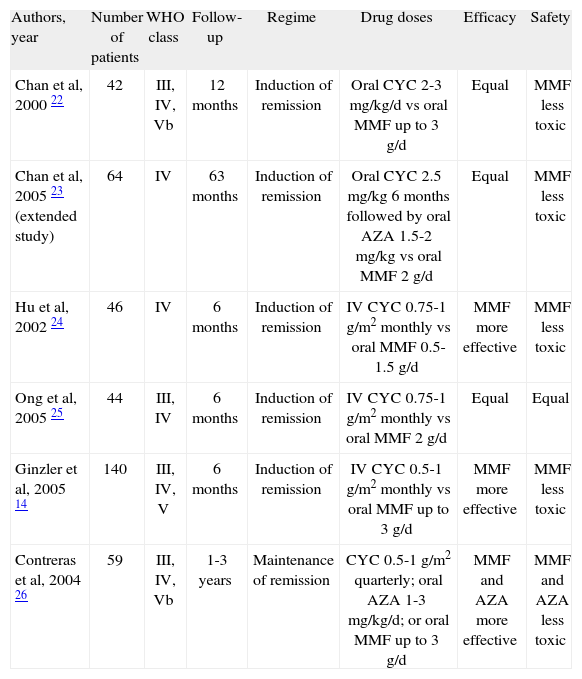Renal involvement in systemic lupus erythematosus (SLE) is an important cause of morbidity and mortality, reaching a prevalence of 39% during the course of the disease. Currently, the therapy for severe lupus nephritis is based on the use of high-dose corticosteroids and immunosuppressive drugs, being traditionally cyclophosphamide the most frequently used agent. Recent studies have demonstrated the efficacy of mycophenolate mofetil as induction therapy for lupus nephritis. Azathioprine, a safe drug during pregnancy, has not been demonstrated to be as effective as mycophenolate or cyclophosphamide as induction therapy, although it is an effective drug for maintenance of remission.
La afectación renal en el lupus eritematoso sistémico (LES) es una causa importante de morbilidad y mortalidad, llegando a afectar hasta al 39% de los pacientes diagnosticados de LES durante su evolución. Actualmente, el tratamiento de la nefritis lúpica grave se basa en el uso de dosis altas de corticosteroides y fármacos inmunosupresores, de entre los cuales, tradicionalmente, la ciclofosfamida ha sido el más utilizado. Estudios recientes han demostrado la eficacia del micofenolato de mofetilo como terapia de inducción para la nefritis lúpica. La azatioprina, de uso seguro durante la gestación, no ha demostrado ser tan eficaz como el micofenolato o la ciclofosfamida como terapia de inducción, aunque sí ha resultado ser efectiva para el
Article
Diríjase desde aquí a la web de la >>>FESEMI<<< e inicie sesión mediante el formulario que se encuentra en la barra superior, pulsando sobre el candado.

Una vez autentificado, en la misma web de FESEMI, en el menú superior, elija la opción deseada.

>>>FESEMI<<<






